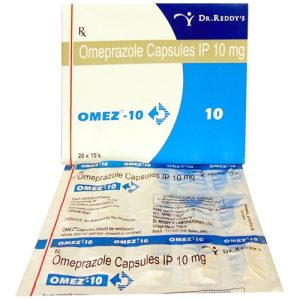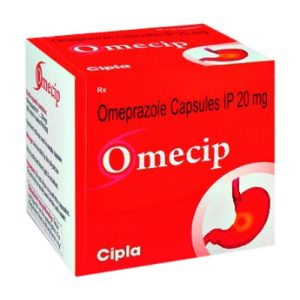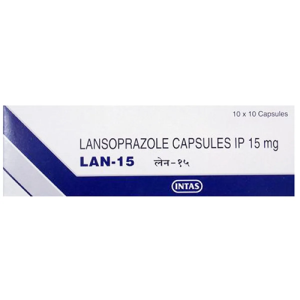Millions of people throughout the world have gastro-oesophageal reflux disease (GERD), which causes heartburn, regurgitation, and pain. As the search for effective treatment continues, two common drugs that are regularly looked at are famotidine and omeprazole. These two medications are both good at treating acid reflux, but they work in different ways and have various pros and cons when it comes to effectiveness, safety, and long-term effects.
Understanding Acid Reflux and Its Management
When the lower esophageal sphincter (LES) is weak or relaxed, stomach acid can flow back into the oesophagus. This is called acid reflux. Frequent exposure to acid can hurt the lining of the oesophagus over time, which can lead to problems including Barrett’s oesophagus, ulcers, and oesophagitis.
Doctors commonly suggested lifestyle changes, dietary changes, and medication to help with acid reflux. Among the drugs that can help, histamine-2 receptor antagonists (H2RAs) like famotidine and proton pump inhibitors (PPIs) like omeprazole are the first line of treatment.
Famotidine: Mechanism and Clinical Use
Get and stay hard at 98% less cost!
Famotidine is a common H2RA that works by inhibiting histamine H2 receptors in the lining of the stomach. This action lowers the amount of stomach acid that is made, which helps with symptoms and stops the oesophagus from getting irritated. Famotidine is usually used for::
- Mild to moderate GERD
- Occasional heartburn
- Preventive care before meals or before bed
- Ulcer treatment for a short time
One good thing about famotidine is that it works quickly, usually within an hour. It is also less likely to produce some long-term problems that can happen when acid suppression lasts too long.
Omeprazole: Mechanism and Clinical Use
Omeprazole is one of the most well-known PPIs. It stops the proton pumps in the stomach from making acid. Omeprazole works better and lasts longer than H2RAs since it stops the last stage in acid formation.
People usually use omeprazole for:
- Moderate to severe GERD
- Erosive esophagitis
- Peptic ulcers
- Zollinger-Ellison syndrome
- Maintenance therapy for chronic reflux
Omeprazole takes longer to function (usually a few days), but it keeps acid levels under control for longer, thus it is better for more severe cases.
Comparing Efficacy: Famotidine vs Omeprazole
Several clinical trials and meta-analyses have looked at how well famotidine and omeprazole work compared to each other. The results generally point to:
- Omeprazole works better to control symptoms, especially in people with erosive oesophagitis or more severe GERD.
- Famotidine works for mild symptoms and may be enough for people who only have heartburn or mild GERD now and then.
- In terms of onset, famotidine works faster, which makes it more suitable for as-needed use.
- Omeprazole’s prolonged length of acid suppression helps the oesophagus lining repair faster over time.
In a head-to-head trial published in The American Journal of Gastroenterology, omeprazole showed greater efficacy in healing esophagitis and maintaining symptom relief after 8 weeks compared to famotidine. However, in patients with non-erosive GERD, the differences were less pronounced. https://pubmed.ncbi.nlm.nih.gov/12167115/
Safety Profiles: What Does the Data Say?
In terms of safety, both famotidine and omeprazole are usually safe to use. But they have various side effects and things to think about in the long term.
Famotidine Safety
People think that famotidine is safe to use for a short time or a long time. Some common side effects are:
- Headache
- Dizziness
- Constipation or diarrhea
H2RAs like famotidine don’t have a big effect on magnesium levels or vitamin B12 absorption like PPIs do, so they may be a safer choice for certain people to use for a long time. Also, famotidine doesn’t have the same danger of getting Clostridium difficile infection or renal problems that comes with using PPIs for a long time.
Omeprazole Safety
Omeprazole is very effective, but its safety profile is more complicated. Some common side effects are:
- Nausea
- Abdominal pain
- Flatulence
- Headache
Long-term use of omeprazole has been associated to:
- Nutrient deficiencies, particularly magnesium, calcium, and vitamin B12
- Bone fractures, especially in older adults
- Kidney disease
- Increased risk of gastrointestinal infections (e.g., C. difficile)
- Potential risk of dementia and cardiovascular issues, though evidence is inconclusive
Because of these concerns, omeprazole is typically recommended for use at the lowest effective dose for the shortest necessary duration.
Patient Considerations and Personalized Treatment
A patient’s symptoms, medical history, and treatment goals typically help them decide between famotidine and omeprazole.
- For mild, occasional symptoms, famotidine may be enough and is safer to use every now and then.
- For chronic or severe GERD, Omeprazole may be better for people with chronic or severe GERD since it works better to lower acid levels and mend the oesophagus.
- Patients who are worried about the long-term consequences of medications may want to start with famotidine or use PPIs with close medical supervision.
People with kidney problems may also need to change their famotidine doses, and people with liver problems need to be watched while they take omeprazole.
Conclusion: Tailoring the Best Treatment Strategy
Both famotidine and omeprazole are well-known drugs for treating acid reflux. Omeprazole is better for long-term or severe GERD since it controls acid more strongly. Famotidine works quickly and is good for mild cases or occasional use.
When it comes to effectiveness, omeprazole is better than famotidine at treating erosive oesophagitis and keeping it from coming back. But it also has additional risks when used for a long time, therefore safety is an important element in choosing a choice.
Ultimately, the decision on whether to use famotidine or omeprazole should depend on how bad the symptoms are, how long the treatment will last, any underlying health problems, and any possible hazards. Patients should work closely with their doctors to find the best and safest treatment for their needs. This means finding a balance between getting rid of symptoms and thinking about long-term health.
Faq
1) What are Famotidine and Omeprazole used for?
Both treat acid reflux/GERD and heartburn. Famotidine is an H2 blocker; Omeprazole is a proton pump inhibitor (PPI).
2) How do they work?
Famotidine reduces acid by blocking H2 receptors. Omeprazole shuts down proton pumps, lowering acid more strongly and for longer.
3) Which works faster?
Famotidine often gives relief within 1 hour. Omeprazole may take hours to days for full effect.
4) Which is more effective for frequent symptoms/GERD?
For frequent or severe reflux, Omeprazole (PPI) usually provides stronger, longer control. For occasional heartburn, Famotidine is often enough.
5) How long do effects last?
Famotidine: about 10–12 hours per dose. Omeprazole: 24-hour acid suppression with daily use.
6) What are common side effects?
Famotidine: headache, dizziness, constipation/diarrhea (usually mild).
Omeprazole: headache, nausea, gas, and with long use, potential low magnesium/B12 or bone concerns.
7) Which is safer long-term?
Use the lowest effective dose. For short-term frequent reflux, PPIs are effective; reassess long-term need with a clinician. Consider lifestyle changes (weight, meals, triggers) and step-down to H2 blockers if possible.




